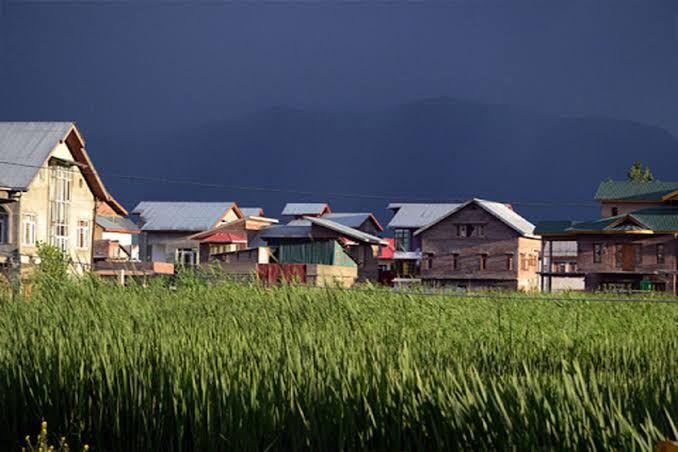When Land Turns To Stone: Kashmir's Race To Bury Its Own Future
Representational Photo
There is a saying every Kashmiri child once heard at the dinner table:“Zaminas tass, makaan paas.” Land is wealth, a house is only a structure.
Beyond proverb, that cultural comment was a way of life.
Families measured prosperity not by how tall their walls were, but by how fertile their soil remained.
A home was a necessity. Land was survival.
Today, that wisdom lies under piles of bricks and cement. Drive even thirty kilometers out of Srinagar and the change is startling.
Villages that once shimmered with paddy fields and saffron blooms now bristle with massive three-storey homes. Orchards that smelled of apples in autumn stand flattened, waiting for truckloads of gravel and iron.
The numbers confirm what the eye already knows.
Agriculture once contributed 28 percent to Kashmir's economy. It now hovers near 20 percent and continues to shrink. Each lost acre chips away at a system that has fed this valley for centuries.
The tragedy is crudely economic.
Families believe these houses are assets, but they drain savings from the day the roof is sealed. Construction costs soar as cement, tiles, wiring, and imported flooring enrich suppliers. Maintenance begins immediately and never stops.
A house like this generates no income and depreciates every year.
Land behaves differently. An acre of fertile soil grows food, supports jobs, and yields income season after season. It appreciates in value because it provides something irreplaceable: sustenance.
You can earn from land. From a sprawling house, you collect only bills.
Imagine Kashmir in 2050. Children searching for a plot to build a modest home will find only concrete carcasses: oversized, aging houses their owners can no longer maintain or sell.
The soil that once fed them will be gone, sealed under roads and roofs. This is not a distant threat.
In parts of Srinagar, colonies built on farmland decades ago already sit half-empty, their giant houses unwanted and unsold. We are now exporting this mistake to the heart of the countryside.
This is a self-inflicted wound, and the cure is not to stop building but to build smarter.
The future is vertical. Around the world, well-designed apartments protect farmland while housing more people.
One acre that currently holds three lavish bungalows could hold dozens of families if used for flats.
Community living, shared resources, and small footprints are not foreign concepts. For a valley that depends on its soil, they are a lifeline.

Legal Disclaimer:
MENAFN provides the
information “as is” without warranty of any kind. We do not accept
any responsibility or liability for the accuracy, content, images,
videos, licenses, completeness, legality, or reliability of the information
contained in this article. If you have any complaints or copyright
issues related to this article, kindly contact the provider above.
Most popular stories
Market Research

- Zebu Live 2025 Welcomes Coinbase, Solana, And Other Leaders Together For UK's Biggest Web3 Summit
- Yield Basis Nears Mainnet Launch As Curve DAO Votes On Crvusd Proposal
- Blueberry Launches A Bold New Brand Platform
- Stonehaven Circle Marks 13Th Anniversary With Hadrian Colwyn Leading Calvio Ailegacyx Innovation
- R0AR Launches Buyback Vault: Bringing 1R0R To R0AR Chain Unlocks New Incentives
- Moonbirds And Azuki IP Coming To Verse8 As AI-Native Game Platform Integrates With Story





















Comments
No comment